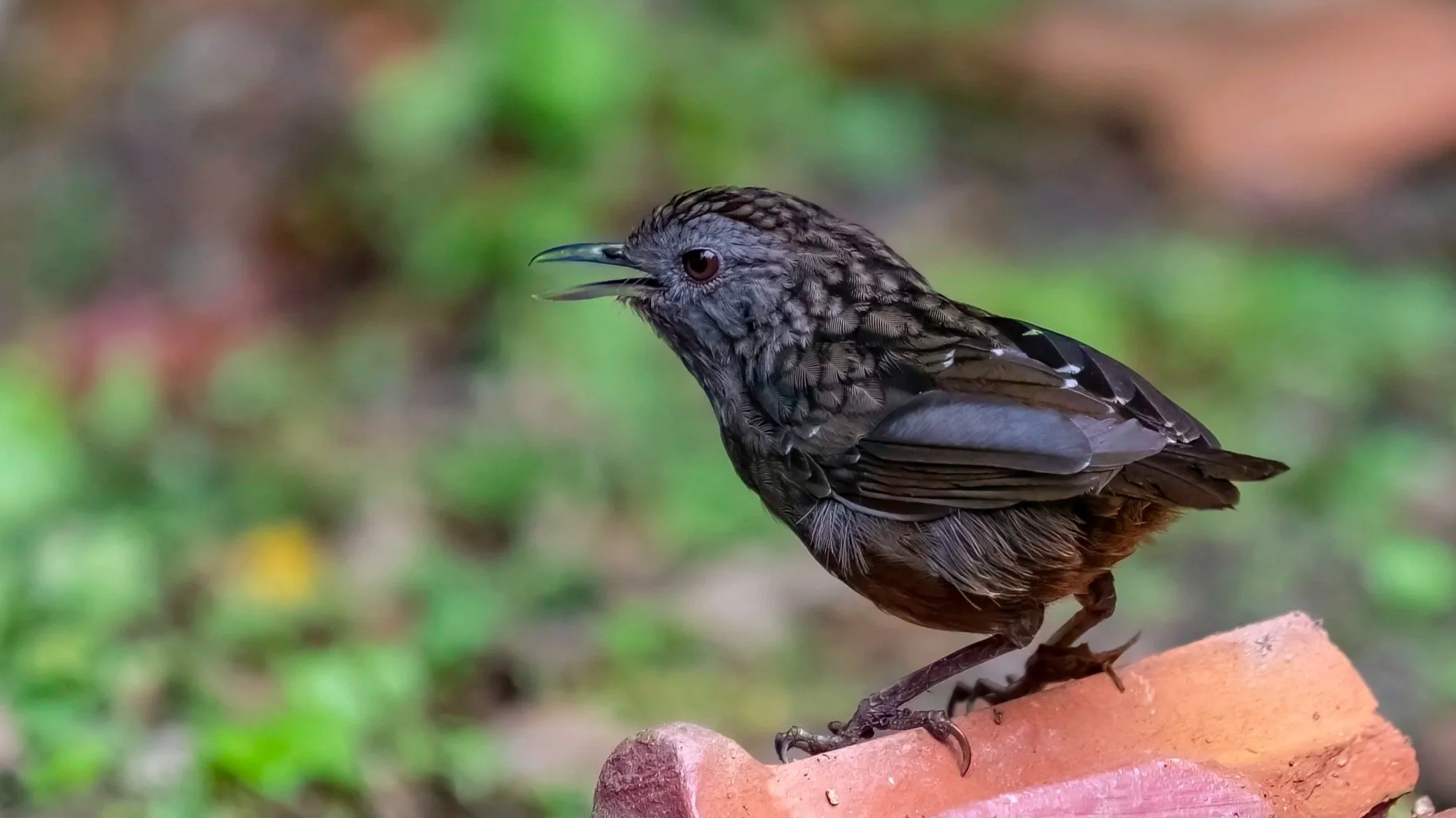Niltava
The Old World Flycatchers are a large family, the Muscicapidae, of small passerine birds mostly restricted to the Old World (Europe, Africa and Asia). These are mainly small arboreal insectivores, many of which, as the name implies, take their prey on the wing. The family includes 324 species and is divided into 51 genera. Muscicapa comes from the Latin musca meaning a fly and capere to catch. The appearance of these birds is very varied, but they mostly have weak songs and harsh calls. They are small to medium birds, ranging from 9 to 22 cm in length. Many species are dull brown in colour, but the plumage of some can be much brighter, especially in the males. Most have broad, flattened bills suited to catching insects in flight, although the few ground-foraging species typically have finer bills.
Of the many families of the Muscicapidae I have already talked about, in earlier blogs, the genus Phoenicurus – Redstarts, the genus Myophonus - Whistling Thrushes, the genus Ficedula & Cyornis in the Old World Flycatchers. This blog is on Niltavas from the subfamily Niltavinae.
Niltava (from niltau, Nepali for Niltava sundara) is a genus of passerine birds in the Old World Flycatcher family Muscicapidae. The genus contains the following six species:
Fujian Niltava (Niltava davidi)
Rufous-bellied Niltava (Niltava sundara)
Rufous-vented Niltava (Niltava sumatrana)
Vivid Niltava (Niltava vivida)
Large Niltava (Niltava grandis)
Small Niltava (Niltava macgrigoriae)
I have here the Large Niltava (Niltava grandis), the Rufous-bellied Niltava (Niltava sundara) and the Small Niltava (Niltava macgrigoriae).
‡‡‡‡‡
Large Niltava
The Large Niltava (Niltava grandis) is a species of bird in the Muscicapidae family. It is found in Bangladesh, Bhutan, Cambodia, India, China, Indonesia, Laos, Malaysia, Myanmar, Nepal, Thailand, and Vietnam. Its natural habitat is subtropical or tropical montane forests. This species has an extremely large range with a stable population trend. The population size has not been quantified, but it is not believed to approach the thresholds for Vulnerable under the population size criterion (<10,000 mature individuals with a continuing decline estimated to be >10% in ten years or three generations, or with a specified population structure). And therefore the species is evaluated as Least Concern.
It is also known as the Great Blue-Flycatcher, Great Niltava and Large Blue-Flycatcher.
Large Niltava - Male
Large Niltava - Female
‡‡‡‡‡
Rufous-bellied Niltava
The Rufous-bellied Niltava (Niltava sundara) is a species of bird in the family Muscicapidae. It is found in Bangladesh, Bhutan, India, China, Laos, Myanmar, Nepal, Pakistan, Thailand, and Vietnam. Its natural habitats are subtropical or tropical moist lowland forest and subtropical or tropical moist montane forest. The Rufous-bellied Niltava measures 15–18 cm and weighs 19–24 g. It is a large, stocky and brightly coloured flycatcher with rounded head shape, fairly short tail and broad-based bill. This bird has sometimes been considered to be conspecific with the Fujian Niltava and Rufous-vented Niltava. This species has an extremely large range with a stable population trend. The population size has not been quantified, but it is not believed to approach the thresholds for Vulnerable under the population size criterion (<10,000 mature individuals with a continuing decline estimated to be >10% in ten years or three generations, or with a specified population structure). And therefore the species is evaluated as Least Concern.
The bird has also been called the Blue-and-orange Niltava or Black-and-orange Niltava, as the male's blue upperparts may look black in poor light. Other names for the bird include Orange-bellied Niltava, Beautiful Niltava, or the Sundara Niltava.
** This was an interesting one because I got the very skittish male Rufous-bellied in January 2018 in Dasada in the Little Rann of Kutch and the female in January 2019 in the hills of Chiang Mai in Thailand. Coincidentally they were both only a few days apart, 23rd for the male and 17th for the female. And the females were on two different mountains.
Rufous-bellied Niltava - Male
Rufous-bellied Niltava - Female
‡‡‡‡‡
Small Niltava
The small niltava (Niltava macgrigoriae) is a species of bird in the family Muscicapidae, native to the Indian subcontinent and Southeast Asia. It is found in Bangladesh, Bhutan, India, Laos, Myanmar, Nepal, Thailand, Tibet and Vietnam. Its natural habitat is subtropical or tropical moist montane forests. It is a smaller version of the Large Niltava (Niltava grandis) about half the size. The male Small Niltava is bright blue with the brightest patches on the shoulder and forehead while the female is brown with a white eyering and a rufous tail and wingtips.
This species too has an extremely large range with a stable population trend. The population size has not been quantified, but it is not believed to approach the thresholds for Vulnerable under the population size criterion (<10,000 mature individuals with a continuing decline estimated to be >10% in ten years or three generations, or with a specified population structure). And therefore the species is evaluated as Least Concern.
Small Niltava - Male
Small Niltava - Female
Related Posts

























